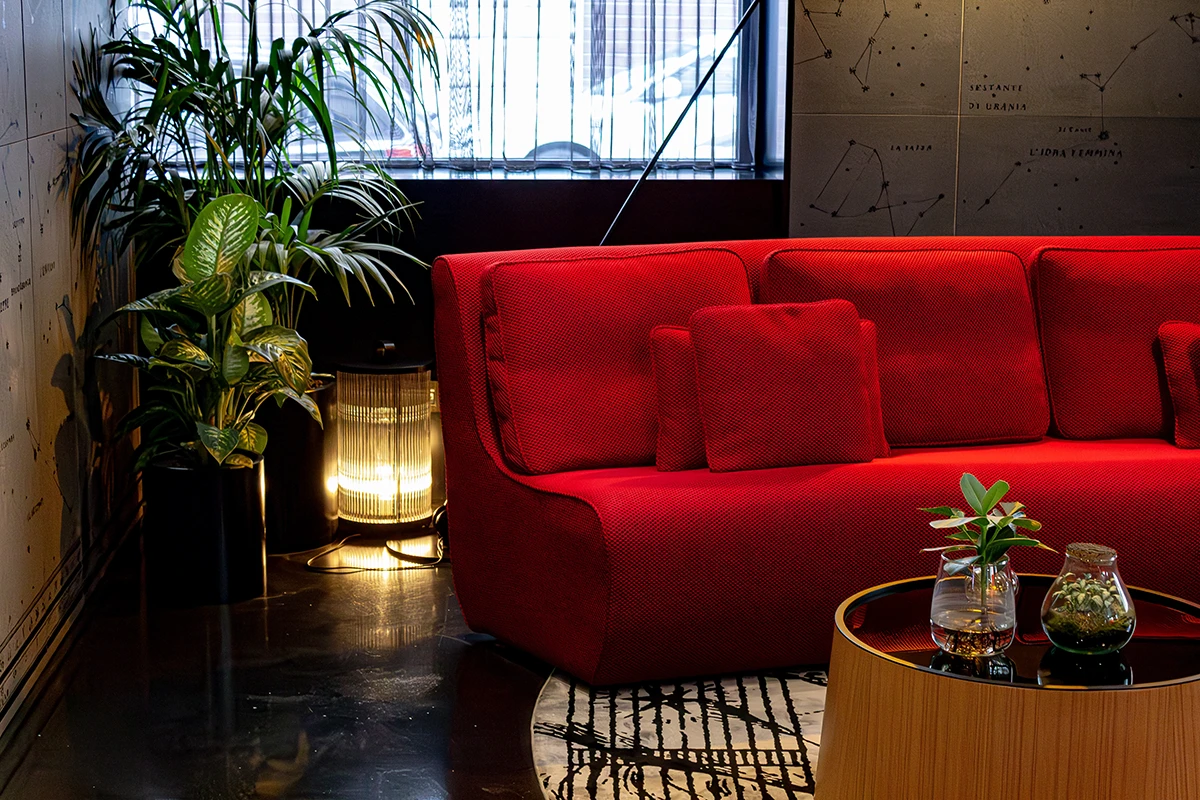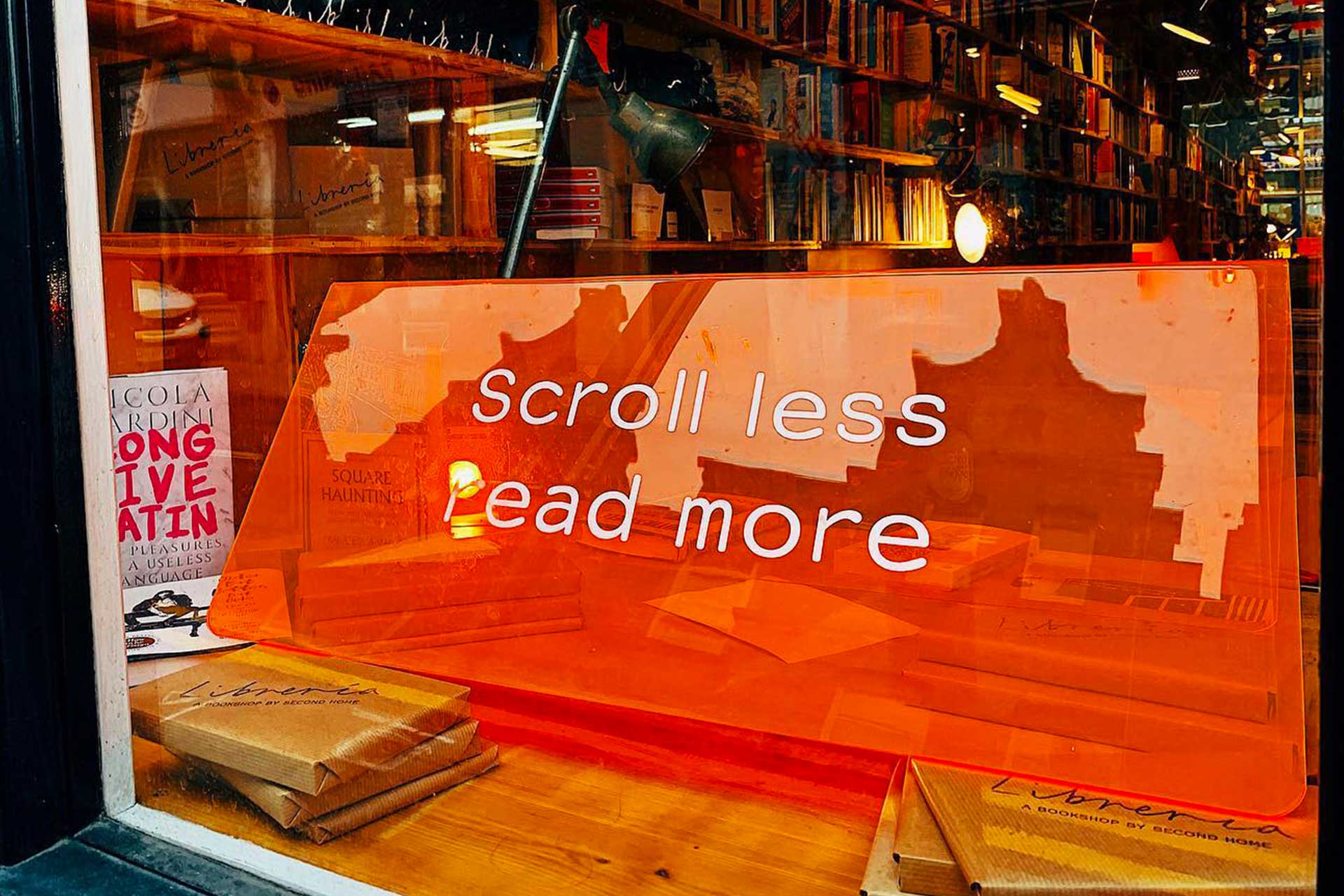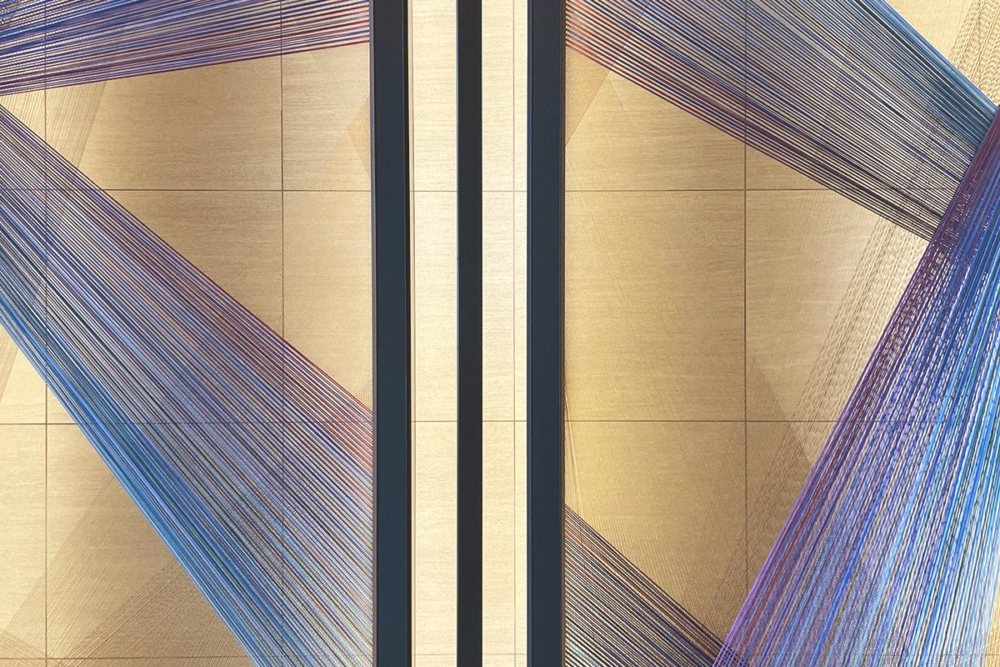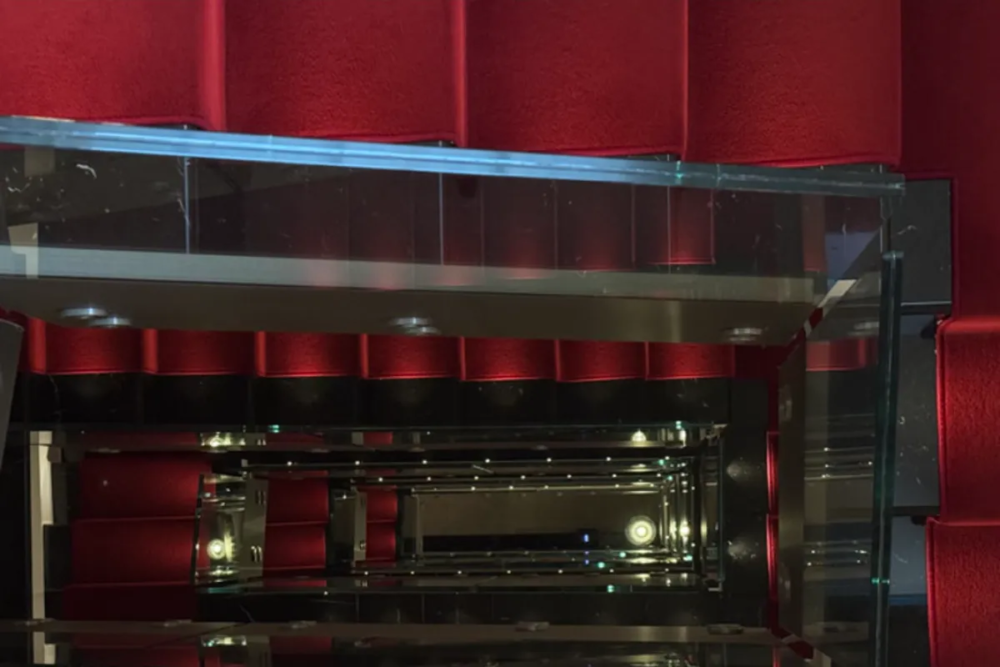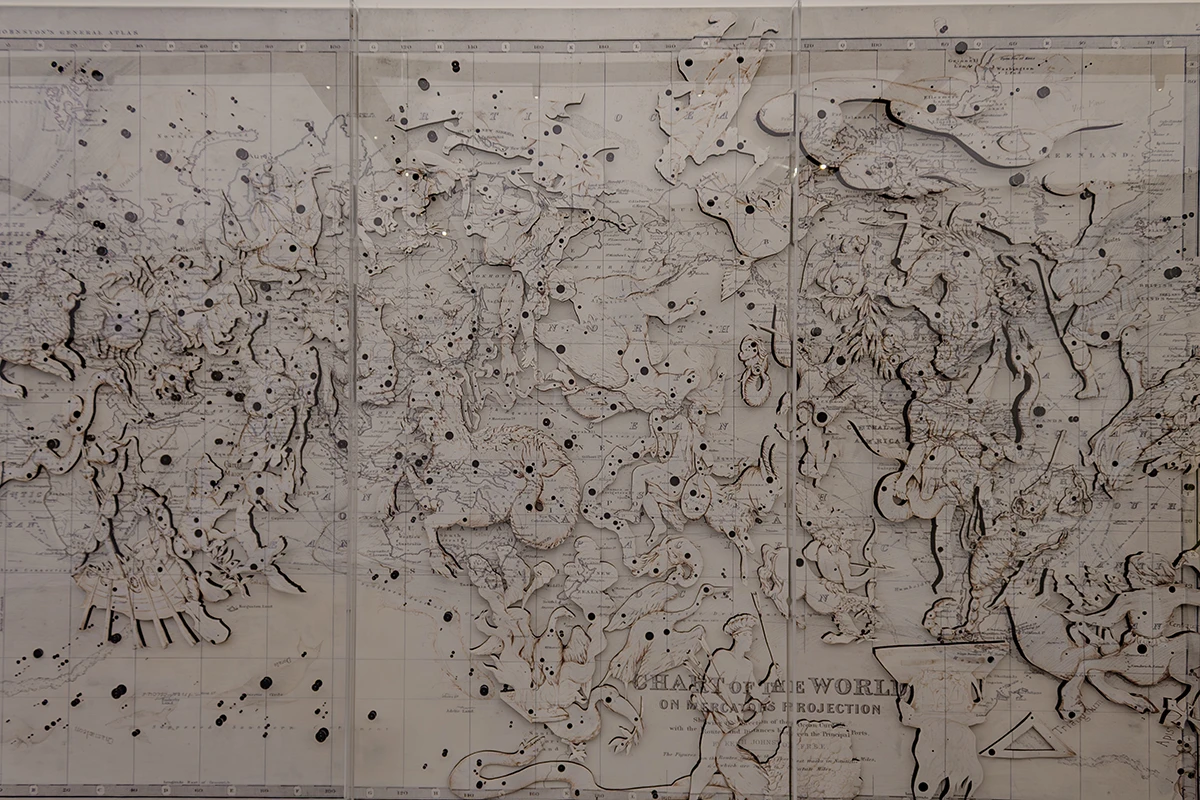
Pietro Ruffo’s Celestial Rome: Re-mapping the Eternal City Through an Urban Sanctuary
From the hand-engraved zodiac constellations in the lobby to the twenty-metre expanse of azulejos on the roof, Pietro Ruffo transforms art’otel Rome Piazza Sallustio into a narrative that weaves together antiquity, the Anthropocene, and today’s cosmopolitan pulse
The journey begins in the lobby, at the art’otel Rome Piazza Sallustio. Here, a dynamically shaped counter shimmers in red, and Pietro Ruffo’s Constellations wall embraces guests in an astral baptism. Hand-engraved on black granite, the surface is scratched and polished until the zodiac constellations emerge—welcoming each visitor with the star group of their birth month. It is a symbolic threshold bridging earth and sky, at once ancestral and contemporary.
Theatre of Memory: Pietro Ruffo and Stratified Art at art’otel Rome Piazza Sallustio
Amid the weave of rationalist buildings and exuberant Umbertine architecture that shapes the Sallustiano quarter—one of Rome’s more discreet, discoverable hearts—stands a place that reinvents the very idea of hospitality: art’otel Rome Piazza Sallustio. Rome’s newest lifestyle gem, created by the PPHE group and affiliated with Radisson, is more than a hotel. It is a house of the arts—an all-embracing experiment in which history, architecture and imagination merge into a single, pulsating organism.
Every component of the design and décor—from walls to tableware, fabrics to floors and ceilings—bears the signature of Pietro Ruffo (Rome, 1978), an artist known for a layered, polyphonic visual language. His creative terrain is an alchemy that is at once abstract and dizzyingly detailed.
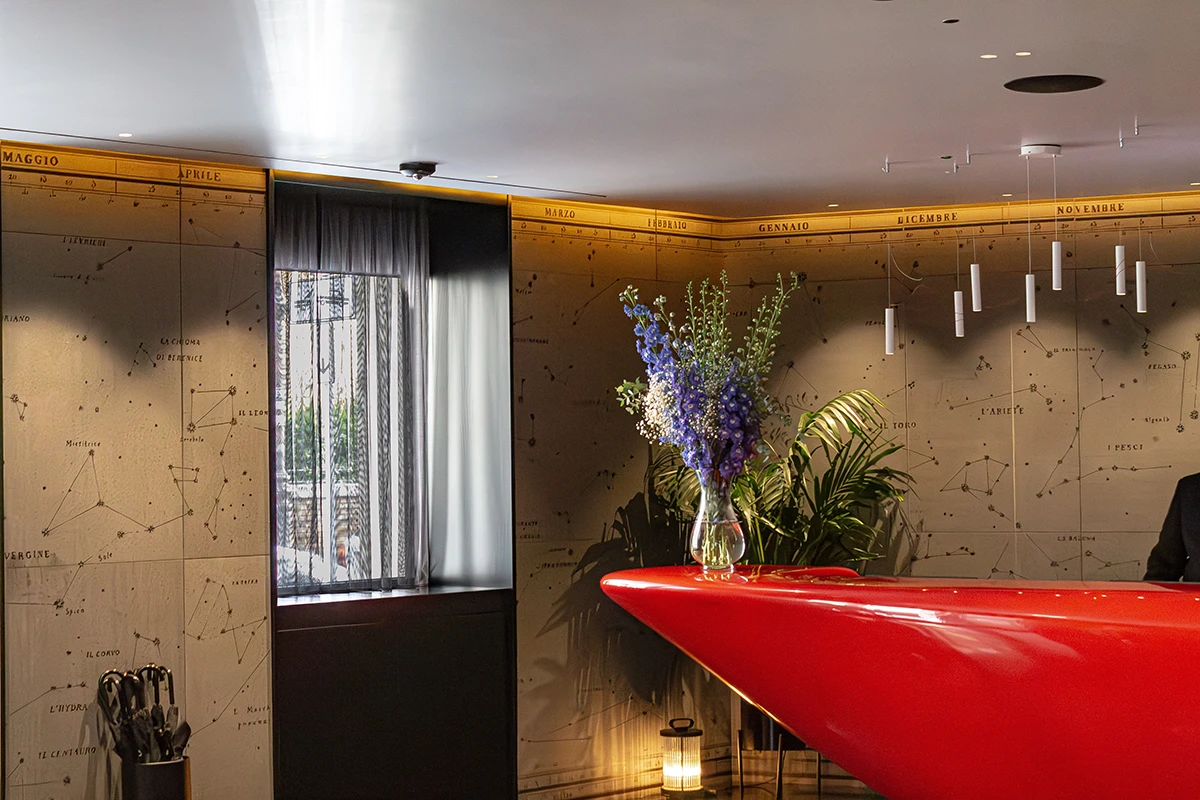
The Meeting of Pietro Ruffo and Digital Space, led by the award-winning Eyal Shoan
Art’otel’s concept grew out of a dialogue between Pietro Ruffo and the interior-design studio Digital Space, headed by multi-award-winning Eyal Shoan. The result is not a hotel dotted with artworks but a total work of art, an osmotic creation that permeates every architectural and ornamental element. Art is the threshold one walks through, the air one breathes, the life one lives.
Surfaces are not adorned with marks for their own sake; they partake wholly in a narrative that re-imagines distant eras and sciences while staying firmly connected to contemporary life. Furnishings lean toward evocation and dream. Each room, corridor and corner of the restaurant or terrace reads like a page in a vast visual book that recounts—through an encounter of dream and philology—the cosmic, natural and human stratigraphy of Rome.
Time as a Central Motif
In ancient Rome—and again in the Renaissance and Baroque periods—nothing was built without first consulting the stars. The glass partition, internally lit and separating lobby from restaurant, houses a fantastic library visible from both sides, inviting esoteric excursions and visionary dreams. Ruffo fuses the unconscious with language, abolishing temporal boundaries and moving in an eternal present—an harmonious flow of yesterday, today and tomorrow.
“Le temps revient”—time renews itself—was Lorenzo de’ Medici’s motto, visually rendered as a trunk sprouting new leaves. Time is central to Ruffo’s exploration of the Anthropocene, the informal geological epoch defined by humanity’s profound impact on Earth’s morphology, biodiversity and climate. Coined in the early 2000s, the term underscores humanity as the planet’s chief agent of change.
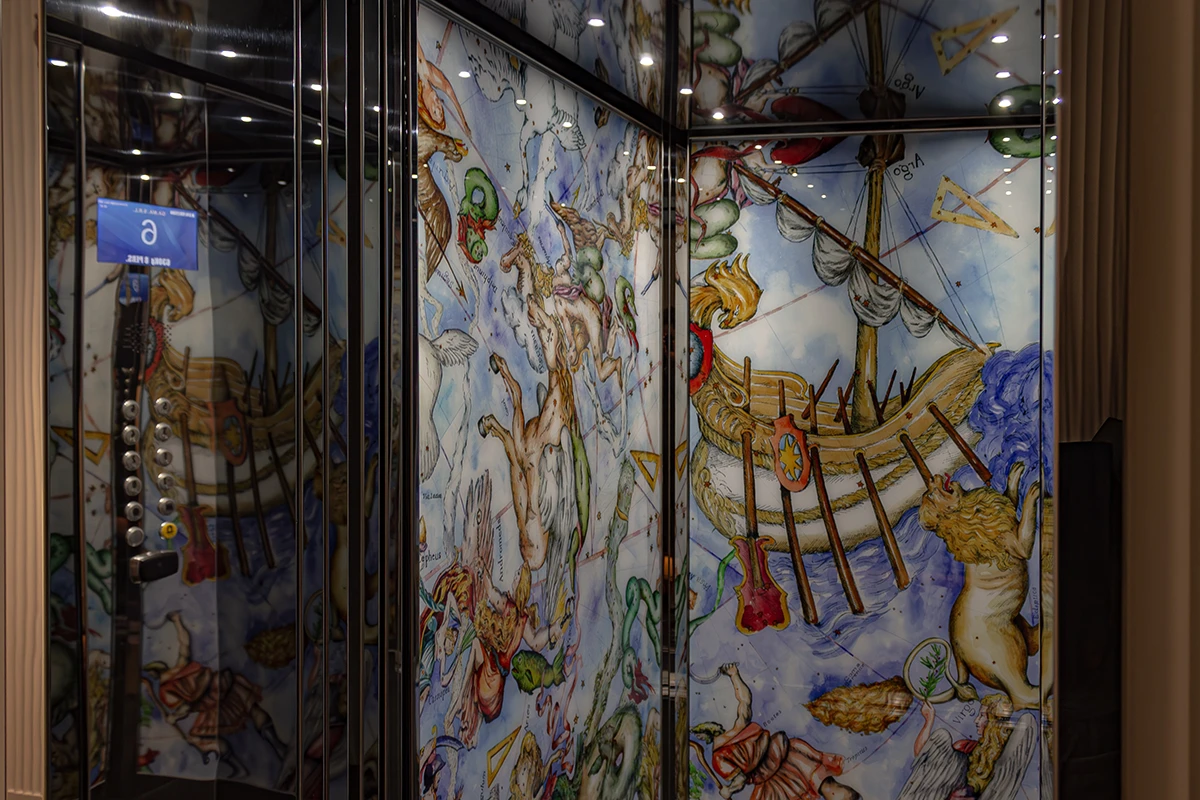
Earlier Exhibitions on Rome’s Layers
Ruffo devoted a Roman exhibition to these layers, presenting eight works that explored the city’s architectural, geological and climatic strata—palimpsests of paper, cut-outs and ball-point drawings of intricate lightness. He positions himself in a questioning, elastic stance toward history.
Another show, “The Wonder of the Last Minute,” rooted in the mosaic of cultural references that fuels his narrative, highlighted humanity’s macro-impact on Earth—whether or not it constitutes a new geological era. Ruffo does not deny “wonder,” the eternal awe stirred by human creation. Both exhibitions feed the inspiration and expressive vocabulary of the art’otel project.
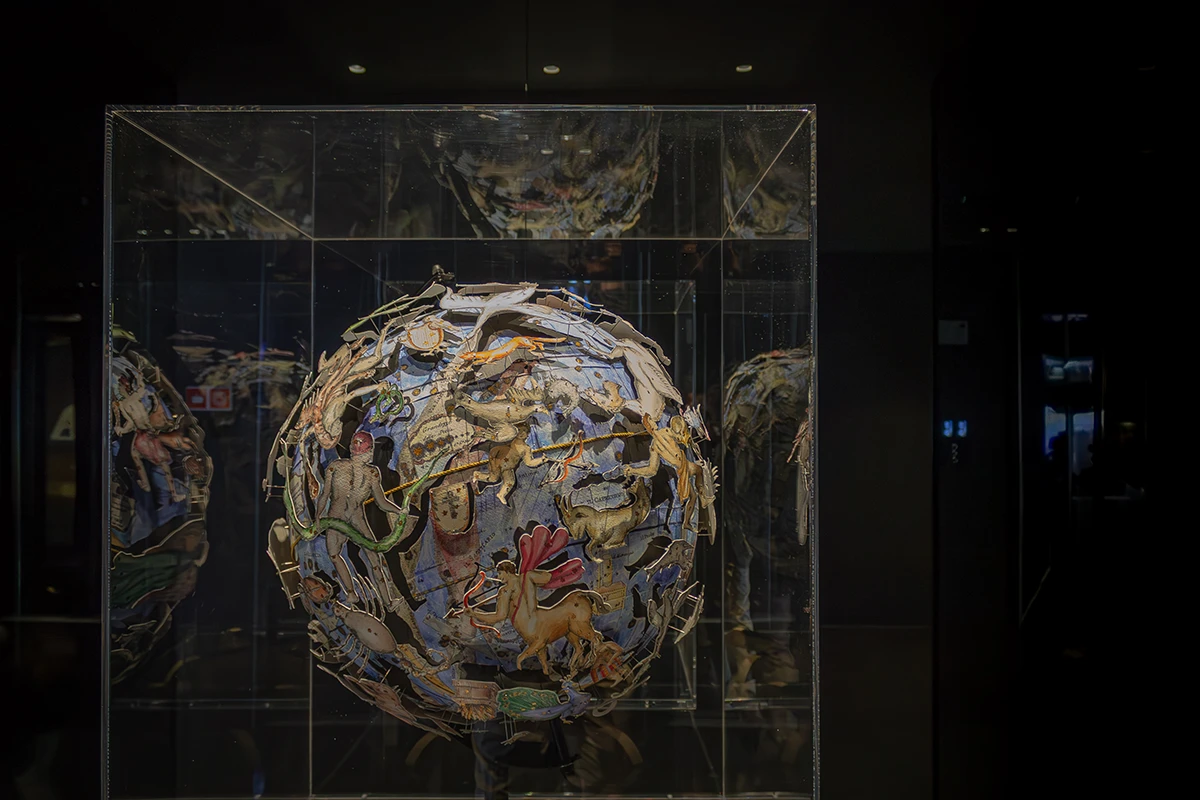
Globo Celeste: A Site-Specific Universe in the Lift Foyer
Inspired by 18th-century terrestrial and celestial globes crafted by Venetian cartographer Vincenzo Coronelli, Globo Celeste occupies the lift foyer. Free of modern geography, it reveals constellations, orbits, comet trails and the music of the spheres, as though the universe itself again governed human cycles. Inside the elevators, the polychrome Celestial Map intensifies the immersion—cabins turned Wunderkammern, cosmic shells transporting travellers among the stars like spacecraft crossing infinity.
Ruffo’s vision revolves around Rome as a stratified organism and semantic complexity—an accumulation of natural and cultural sediment that nullifies the passage of time.
Dreams Encoded in Every Corner
Throughout art’otel, this philosophy becomes a dialogue—offering a password to dream. From rooms to suites, common areas to bathrooms, unfolds a tale in which sea, flora, fauna, successive civilizations, nature and architecture overlap like a fresco of universal memory.
In Deluxe Rooms and Suites, Ruffo’s Nature Detests Emptiness carries an ecological message. Interwoven floral motifs, maps and script traces highlight the climate crisis, the seizure of natural spaces and the urgency for a new pact between humanity and nature. Plants testify to a cosmos in flux; animals appear as totemic figures—poetic guardians of a world in need of healing.
Unexpectedly, Primordial Forest, printed on glass, presents a luxuriant tropical jungle bursting with forms and colours—a reminder of nature’s uncontrollable power erupting into urban life. The bathroom becomes an ancestral cave, a mythical garden—paradeisos in the ancient Persian-via-Greek sense—a suspended enclosure where time itself halts.
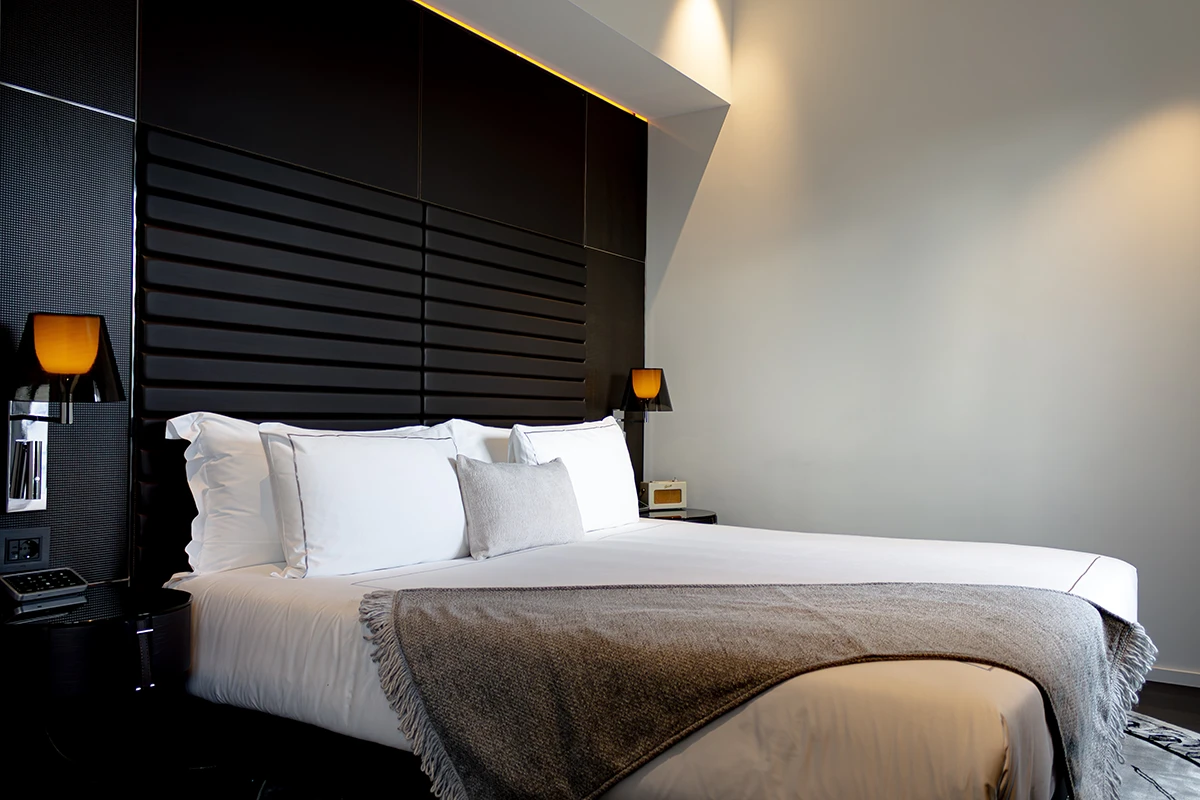
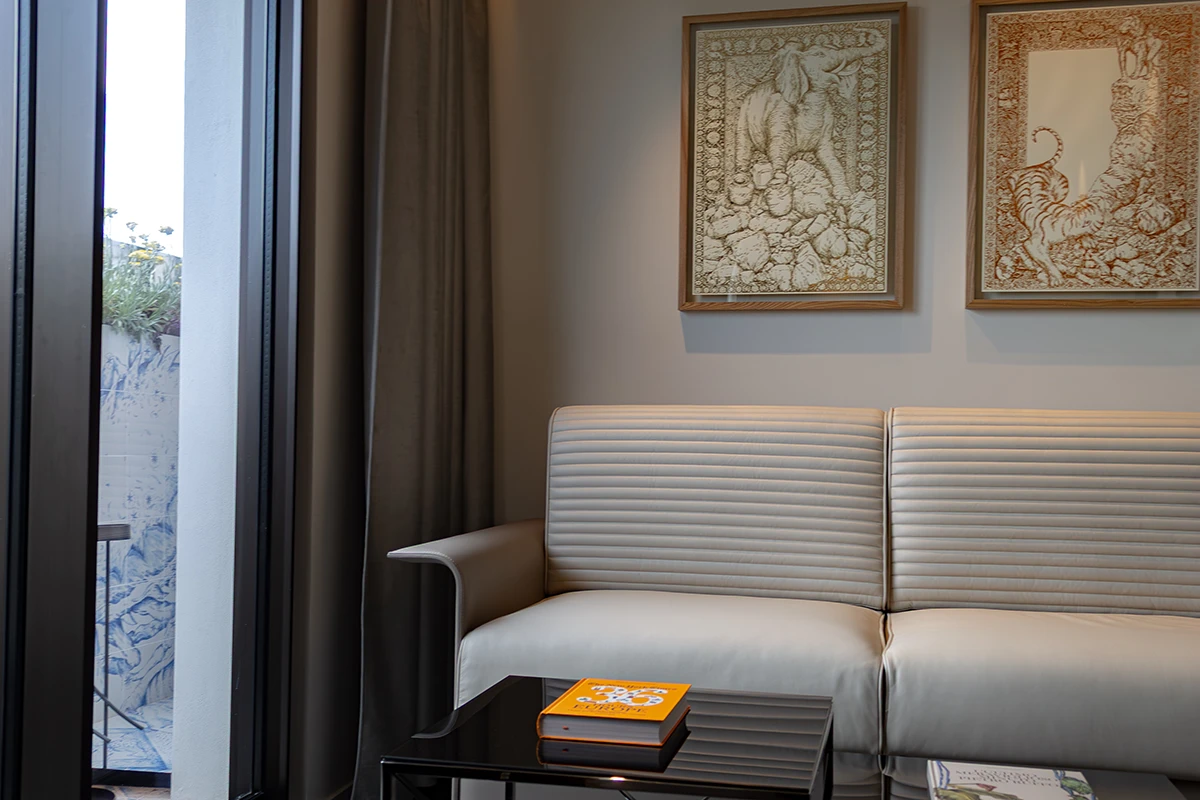
The Cultural Hub on Level –1
Like every body with a secret heart, art’otel Rome Piazza Sallustio places its cultural hub on level –1: a genuine contemporary gallery in continual metamorphosis. Here “art’beat” hosts a rich programme of events, performances, workshops, rotating exhibitions and parties. This is no tourist animation but the genesis of a meaningful hub engaging Rome’s creative generations. The fiction’s paths seem endless—one space, one reflection after another. The hotel becomes patron, home to local and international artists, a stage for visual and sonic languages in dialogue with the city. The gallery is integral to the stay; guests, curious passers-by or locals become witnesses to a living, ever-evolving Rome.

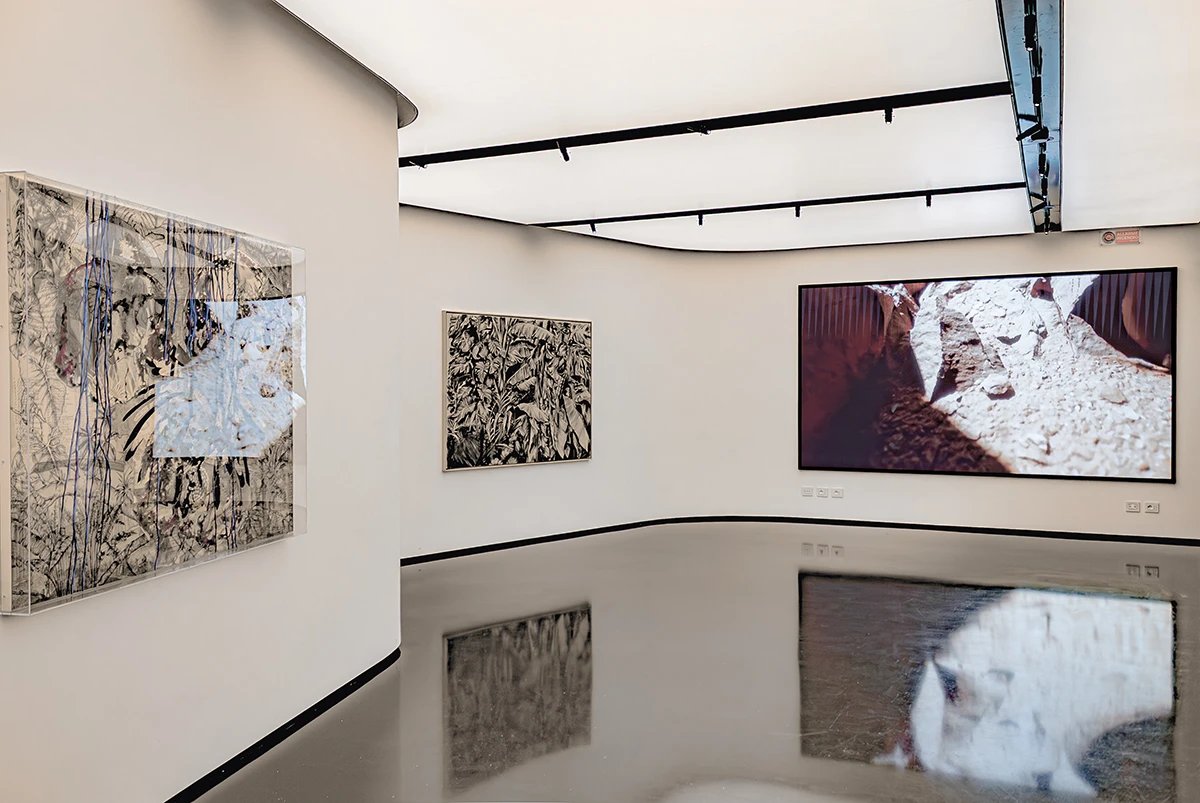
The Terrace: Il Cielo sopra Roma and Astral Cocktails
On the terrace serving restaurant and bar—framed by the sometimes theatrical façades of the Sallustiano palaces—one encounters another vast Ruffo creation: Il Cielo sopra Roma (The Sky over Rome). Spanning twenty metres across a field of azulejos (traditional Portuguese ceramic tiles), it engages once again with a dreamlike Rome—an entity floating among constellations and celestial bodies. The Eternal City merges with the universe, turning the hotel’s outdoor space into a personal niche, a metaphysical cocoon. The bar offers drinks inspired by Rome’s historic streets; each sip becomes an itinerary, a flânerie, tracing an imaginary trajectory between past and present.
Ninety-Nine Rooms in a Symphony of Materials
Art’otel Rome Piazza Sallustio is not only a temple of beauty and reflection but also a haven designed for well-being and tangible pleasure. Its 99 rooms resonate with precious materials and crafted details; suites boast private terraces and unexpected views of monumental Rome. Amenities include a fully equipped gym and sauna—essential complements to discreet, attentive hospitality. Staff have been trained to act as curators of an ever-evolving work.
Suites, likewise co-designed with Ruffo, feature custom fabrics, hand-illustrated wallpapers and sophisticated furnishings. The tone is never excessive, never shouted: a rarefied elegance offers a luxury of detail, service and atmosphere without ostentation.
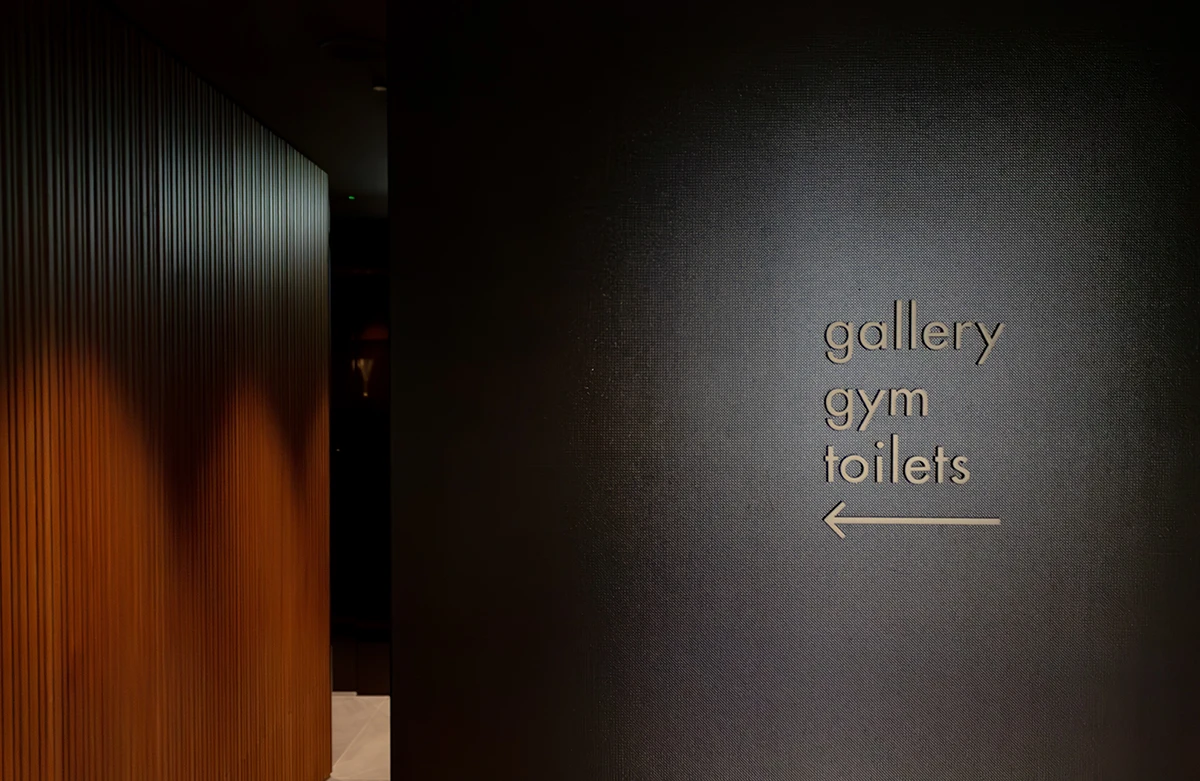
Yezi Restaurant: A Pan-Asian Layer of Cosmopolitan Identity
Adding another layer to the hotel’s cosmopolitan identity—where design meets culinary experimentation—is Yezi restaurant, also reachable via an independent entrance. Twenty-one original Ruffo works carry the narrative’s magic across the walls. Dishes, intriguing in their blend of diverse Asian traditions and refined contemporary aesthetics, are meant for sharing. The wine cellar is extensive and surprising, guided by a highly professional sommelier. There is a private room overlooking the open kitchen and a wide tea list, paying homage to the building’s Anglo-Saxon imprint when it was the Hotel Londra & Cargill in the 1920s.
The wife of the then-owner—an expatriate Englishwoman related to the Babingtons of the famed teahouse at the foot of the Spanish Steps—is remembered for introducing the British five o’clock tea tradition to the Rome of that era.
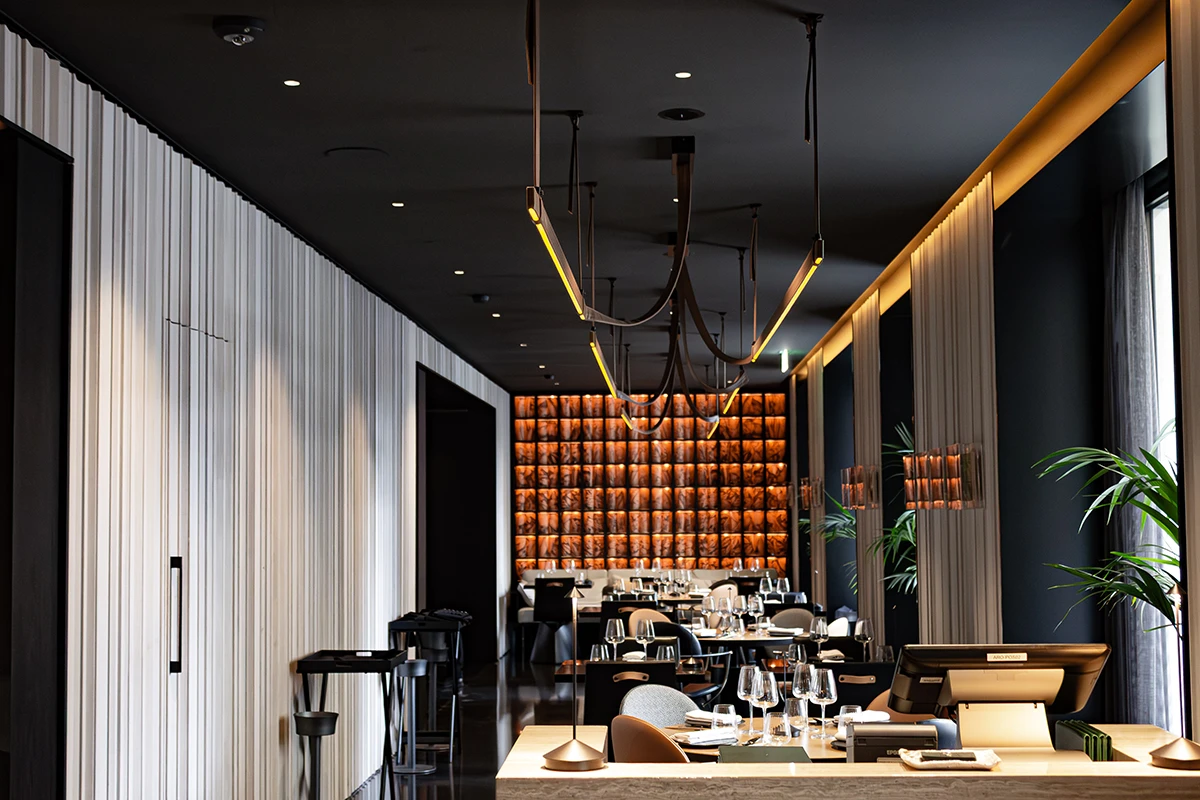
Pietro Ruffo’s Private Cosmology
Educated in architecture and visual arts, Ruffo’s oeuvre reflects continually on grand themes: history, the nature-civilization relationship, map and territory, stars and politics. His installations are not decorative but conceptual devices—inviting travel, thought, remembrance and forward gaze. As he explains: “I sought to unfold the stories of the various historical layers that built Rome, creating an encounter between sky, nature and people in every corner of the hotel.”
In this sense, art’otel Rome Piazza Sallustio is an open work, a poetic atlas, a new marvel in Rome’s landscape. Anyone crossing these rooms—whether for a night or an event—embarks on a journey and emerges transformed. It is not just beauty that strikes, but the intelligence behind that beauty. Once again, Rome tells its own story through those who inhabit it, astonishes and surprises even those who believed they had always known her.
Cesare Cunaccia
